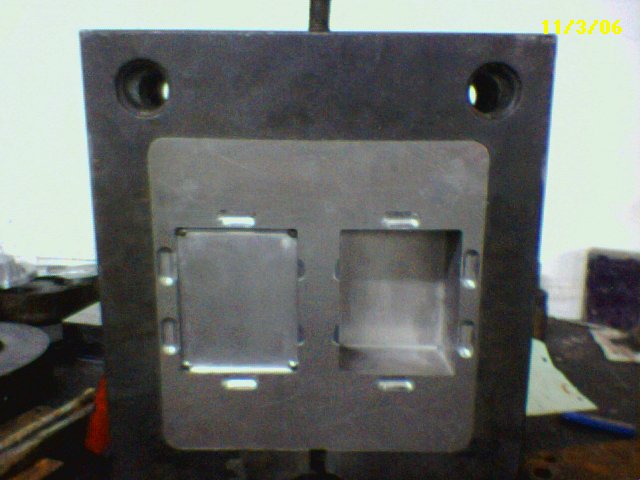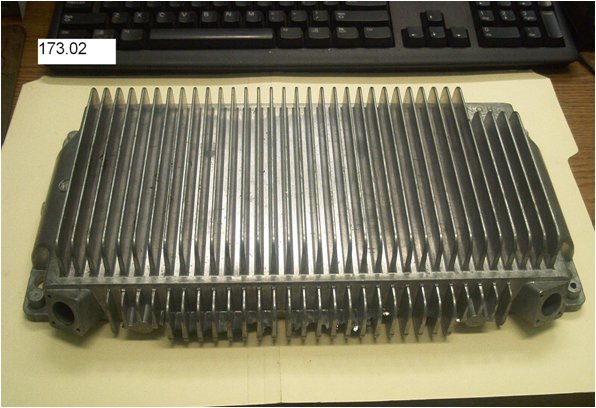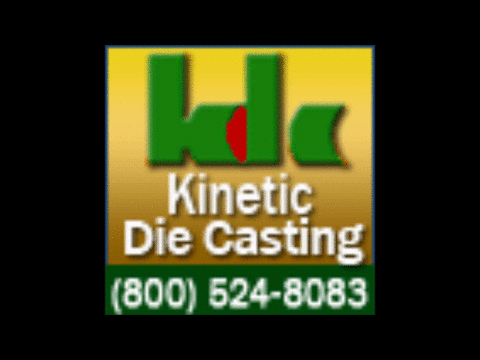Die casting parts: Using Cold-chamber machines in die casting. Producing high quality die casting parts is no walk in the park. It needs the use of the right kind of method and the right type of machine. Most die casts …
Continue reading
Tag Archives: Aluminum Die Casting Company
Aluminum Lighting Fixtures–Die Casted
 Aluminum Lighting Fixtures–Die Casted. The die casting manufacturing process is quite similar to permanent mold casting. Both processes start out by melting or liquefying the material such as resin, rubber, zinc, copper and aluminum to name a few, that is going to be used. The melted materials will then be injected into die cast molds castings. The liquid will then take the form of the patterns in the mold castings. The molds will then be allowed to cool down to harden and once they are opened, the product is finished. The difference between die casting and permanent mold casting is that the former uses high amounts of pressure in the molds so that the material will get into every part of the pattern. This results in better quality of the products which is why die casting is chosen to make Aluminum Lighting Fixtures.
Aluminum Lighting Fixtures–Die Casted. The die casting manufacturing process is quite similar to permanent mold casting. Both processes start out by melting or liquefying the material such as resin, rubber, zinc, copper and aluminum to name a few, that is going to be used. The melted materials will then be injected into die cast molds castings. The liquid will then take the form of the patterns in the mold castings. The molds will then be allowed to cool down to harden and once they are opened, the product is finished. The difference between die casting and permanent mold casting is that the former uses high amounts of pressure in the molds so that the material will get into every part of the pattern. This results in better quality of the products which is why die casting is chosen to make Aluminum Lighting Fixtures.
Also, Aluminum Lighting Fixtures help in illuminating man made structures such as houses, buildings, tunnels as well as the streets at night. They are an essential part of these structures and a lot of them are needed. By using the die casting process, the bulk orders for these Aluminum Lighting Fixtures are met. Not only that, quality and consistency is insured by die casting. This is a cost efficient and effective way of producing Aluminum Lighting Fixtures.
Furthermore, Aluminum is a great choice for lighting fixtures as they are strong and can last a very long time. They are also very lightweight compared to other metals. Since they can be harvested almost anywhere, they are very cheap too.

Light Fixture Die Casting Parts
Kinetic Die Casting Company makes aluminum die castings as Lighting Fixture Die Castings. We make these parts every day and ship thousands of these aluminum die castings every week.
Contact us to get die casting prices http://www.kineticdiecasting.com/replyform.html.
Kinetic Die Casting Company
6918 Beck Avenue
North Hollywood, California 91605
Sales@kineticdc.com
The Alloys of Die Casting
 The Alloys of Die Casting. Aluminum is one of the most common alloys used in die casting. Aluminum is also one of the many alloys that can undergo almost all the process in casting. Die casting is where the aluminum is mostly used. But pure aluminum casting is rarely produced because of the susceptibility of the alloy to cracking and shrinkage. This alloy is usually alloyed with silicon and copper because these two alloys can increase melt fluidity, especially silicon, and reduces ductility. Silicon can also reduce maintainability of the alloy and copper can increase the hardness. The combination of the three alloys can reduce corrosion. For better corrosion resistance, aluminum casting with lower copper should be used such as 360 and 413. Aluminum is also commonly used when it comes to electricity because of its conductivity and high temperature strength. Aluminum has many uses in today’s everyday lives from office to home to commercial uses and industrial uses.
The Alloys of Die Casting. Aluminum is one of the most common alloys used in die casting. Aluminum is also one of the many alloys that can undergo almost all the process in casting. Die casting is where the aluminum is mostly used. But pure aluminum casting is rarely produced because of the susceptibility of the alloy to cracking and shrinkage. This alloy is usually alloyed with silicon and copper because these two alloys can increase melt fluidity, especially silicon, and reduces ductility. Silicon can also reduce maintainability of the alloy and copper can increase the hardness. The combination of the three alloys can reduce corrosion. For better corrosion resistance, aluminum casting with lower copper should be used such as 360 and 413. Aluminum is also commonly used when it comes to electricity because of its conductivity and high temperature strength. Aluminum has many uses in today’s everyday lives from office to home to commercial uses and industrial uses.
Furthermore, Aluminum Die Casting also has high dimensional stability when doing complex shapes and thin walls. The typical applications of aluminum alloy are Alloy 380.0, A380.0, 360, 413, and 518.1. They are typically used for home equipment like lawnmower, dental equipment, street lamp housings, frying skillets, escalator parts, connecting rods, instrument cases, and marine and aircraft hardware. Alloy 518 is known to have the highest corrosion resistance but it has low fluidity compared to the other aluminum alloys. This is also usually the most expensive aluminum alloy because of the difficulty to cast.
Also, Aluminum casting usually doesn’t undergo heat treatment but instead undergo metallurgical stabilization and dimensional treatment.
Aluminum Heat Sinks are Die Casted
Aluminum Heat Sinks are Die Casted. Aluminum Heat Sinks have one important purpose, and that is to regulate heat generated by the product it is in. These heat sinks are placed in most electronics and appliances so that the heat from electrical wiring and other parts of the product are diverted from them into the heat sink, thus protecting them from overheating and malfunctioning. In other words, Aluminum Heatsinks provide a very important safety feature for these products. This means that throughout its life span, it will take on a lot of abuse and beating, which is why aluminum is ideal for the job.
Did you know that aluminum is a very tough and durable material? It has been noted that it is comparable to steel in terms of durability. But, when it comes to weight, aluminum weighs just a third of steel of the same size and shape. This makes it ideal for making heat sinks. Also, aluminum can be harvested almost anywhere in the world. This means that it is cheap and easy to acquire. To meet high demands for Aluminum Heat Sinks, the manufacturing process known as die casting is used.
Furthermore, the first step in die casting Aluminum Heatsinks is to liquefy the aluminum bars that are going to be used. Once in their liquid state, they will then be injected into casting molds. These castings give the liquid its new shape. Then, pressure of up to 35,000 pounds per square inch/PSI is applied on the castings. This will let the liquid set in every part of the die cast mold. It will then be set aside to cool and harden. Once opened, the product only requires a few finishing touches and its done.
Aluminum Heat Sinks Keeps Things Cool
Aluminum Heat Sinks Keeps Things Cool. A lot number of products currently in the market and currently in production today make use of parts known as Aluminum Heatsinks. These heat sinks are used in many appliances and electronic devices today and their main purpose is to remove or divert the heat generated by the electric current going through the wires or by other components of the product. This is placed so that the more important components of the machine will not be affected by the heat and would function normally.
Aluminum is used for this because of its characteristics. First and foremost, it is one of the most strong and durable materials. It is a fact that aluminum is just as strong if not stronger than steel. Secondly, it is one third of the weight of steel, this is important so that the Aluminum Heat sinks will not add too much weight on the product. It is also flexible, easy to use and very cheap as it can be mined almost anywhere. Lastly, aluminum can be used in die casting.
Furthermore, a popular method of mass producing parts and other products is known as die casting. This method of manufacturing starts with liquefying the aluminum by exposing it in intense heat. The resulting liquefied material is then placed into die cast molds. These molds will give the aluminum its new shape once it has cooled down and hardened back to its solid state. After doing some finishing touches and fine tuning of the product, the results are identical, high quality Aluminum Heatsinks.

Die Casting Aluminum Heat Sink Parts
Kinetic Die Casting Company makes aluminum die castings as Die Casting Aluminum Heat Sinks. As a Die Casting Company, we make these parts every day and ship thousands of these aluminum die castings every week.
Contact us to get die casting prices http://www.kineticdiecasting.com/replyform.html.
Kinetic Die Casting Company
6918 Beck Avenue
North Hollywood, California 91605
Sales@kineticdc.com
Porosity–What is it?
 What is Die Casting Porosity? In order for you to know what die casting porosity is, you need to know the basics. Die casting is a process wherein a particular amount of molten metal is put inside a container, then it is applied with great force so as to force it into a die cast mold. After this, the metal is left to cool down and harden then it is removed. The same process is repeated over again. Die casting companies use metals which are non-ferrous, or do not contain Iron, as this is the highest factor for oxidation and rusting. Several examples of non-ferrous metals include zinc, aluminum, lead, magnesium, tin and copper.
What is Die Casting Porosity? In order for you to know what die casting porosity is, you need to know the basics. Die casting is a process wherein a particular amount of molten metal is put inside a container, then it is applied with great force so as to force it into a die cast mold. After this, the metal is left to cool down and harden then it is removed. The same process is repeated over again. Die casting companies use metals which are non-ferrous, or do not contain Iron, as this is the highest factor for oxidation and rusting. Several examples of non-ferrous metals include zinc, aluminum, lead, magnesium, tin and copper.
It is a kind of factory defect in which die casts contain small pockets of void space and air within the metal or plastic, causing it to become porous. Eventually, these air pockets cause the die casted material to become brittle and weak. Usually, die casting porosity is an unwanted result and is considered as a substandard product.
Basically, it is caused by poor handling and casting process. There might have been small cracks and crevices in the machine where the air could come in. The mixing process of the metal may have been poor, therefore creates bubbles inside the metal. One needs to check up the machine used for die casting regularly to prevent this kind of problem. It is also recommended to use vacuum devices to suck out the air inside the molten substance to reduce the incidence of die casting porosity.
Kinetic Die Casting Company makes Aluminum Casting Parts. As a die casting company, we make these parts every day and ship thousands of these aluminum die castings every week.
Contact us to get die casting prices http://www.kineticdiecasting.com/replyform.html.
Kinetic Die Casting Company
6918 Beck Avenue
North Hollywood, California 91605
Sales@kineticdc.com


